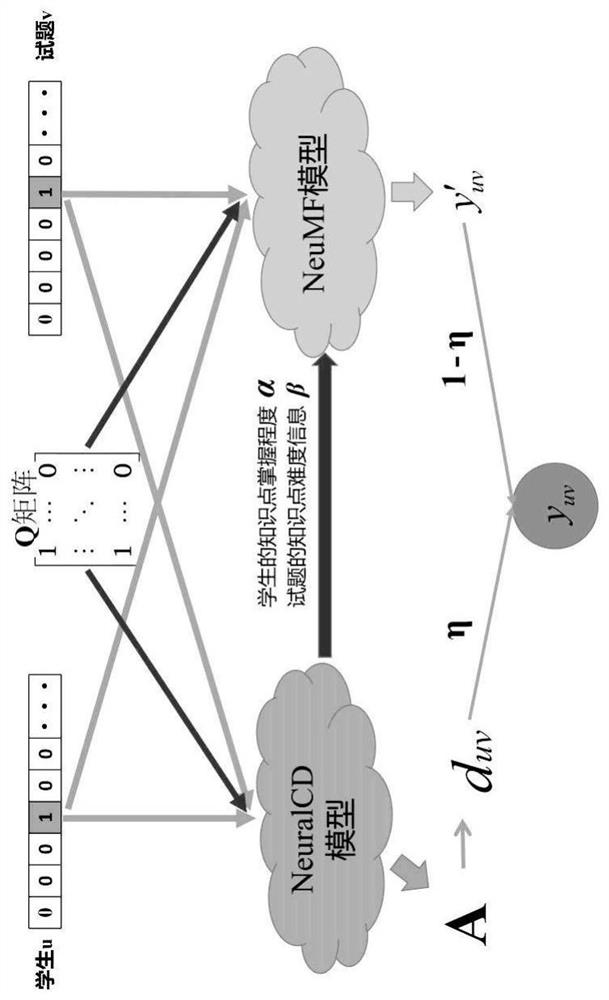Test question recommendation method combining neurocognitive diagnosis and neural collaborative filtering
A collaborative filtering algorithm and collaborative filtering technology, applied in the computer field, can solve problems such as mismatching difficulty levels of test questions
- Summary
- Abstract
- Description
- Claims
- Application Information
AI Technical Summary
Problems solved by technology
Method used
Image
Examples
Embodiment Construction
[0009] See attached figure 1 As shown, the NCD-NCF method mainly includes three steps:
[0010] Step 1 (student cognitive diagnosis): Use the neurocognitive diagnosis model to model the practice process of each student's test questions, obtain the knowledge point mastery degree α of each student and the knowledge point difficulty information β of the test questions, and output the student The test questions master the level matrix A.
[0011] Step 2 (Student score prediction): Combined with the neural collaborative filtering algorithm, the cognitive diagnosis results of the previous step are introduced as the prior information of the neural collaborative filtering to obtain the student's score vector on the test questions.
[0012] Step 3 (output): According to the actual knowledge level of the students, set the difficulty range of the recommended test questions, and filter out the test questions whose predicted scores are within the range, so as to generate a personalized te...
PUM
 Login to View More
Login to View More Abstract
Description
Claims
Application Information
 Login to View More
Login to View More - R&D
- Intellectual Property
- Life Sciences
- Materials
- Tech Scout
- Unparalleled Data Quality
- Higher Quality Content
- 60% Fewer Hallucinations
Browse by: Latest US Patents, China's latest patents, Technical Efficacy Thesaurus, Application Domain, Technology Topic, Popular Technical Reports.
© 2025 PatSnap. All rights reserved.Legal|Privacy policy|Modern Slavery Act Transparency Statement|Sitemap|About US| Contact US: help@patsnap.com



